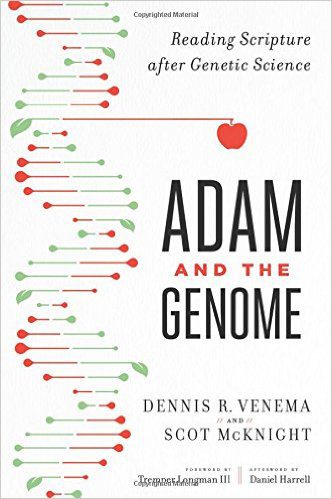 Sheesh, it’s getting to the end of February and it has been feeling like Spring around Chicagoland. I’ll take it.
Sheesh, it’s getting to the end of February and it has been feeling like Spring around Chicagoland. I’ll take it.
On Monday I will be announcing our next DMin cohort beginning July 2017. Come back Monday!
Good idea, worship over the meal, by Kendall Vanderslice: [HT: KKNM]
Meanwhile, the Assemblies of God Community Dinners in Seattle, Washington, the Disciples of Christ Potluck Church in Madisonville, Kentucky, and the Episcopal Southside Abbey in Chattanooga, Tennessee, began experimenting with their own ideas of meal-centered worship. One by one, communities began to emerge, though many remained unaware of others participating in the movement.
In the years since, the model has exploded from four to over forty congregations across North America and Europe, with new communities emerging on a weekly basis.
While every church has its own feel, the concept is the same: connect with others in a language spoken by all—food. Serving a hearty meal at a table with real napkins, dishes, and silverware, the services aim to feel like a dinner party, fostering conversation among men, women, and children who might otherwise never meet.
These churches encompass a range of denominations, both conservative and progressive, and they meet in a variety of settings: in church basements, restaurants, gardens, and art galleries. Found in urban, suburban, and rural areas, they attract wealthy, middle class, and unhoused neighbors. The intergenerational and multi-ethnic congregations create engaging dialogue; and the meals become a space where diners can disagree and still maintain close relationship.
Throughout the evening, they read Scripture, sing, and pray, but most importantly, they eat. Central to the process of eating is engaging in dialogue, providing space to respond to the Scripture or sermon.
Exceptionally irenic piece by Ted Davis, firmly in disagreement, historically judicious:
At BioLogos we respect the zeal of Young-Earth Creationists for the gospel and their intention to defend biblical truth. We disagree strongly with many of their conclusions, of course, but we want to express these disagreements charitably and in a way that respects the complexity of the issues involved. Responding directly to every statement made about our position by Young-Earth Creationists would not, in our opinion, best facilitate this sort of dialogue. But sometimes claims are made about our positions or authors that are demonstrably false, and out of our commitment to truth we believe these must be corrected. We expect no less from our critics.
Ken Ham’s Beef about the History of Creationism
Earlier this year, Ken Ham wrote a column on his official blog at Answers in Genesis (AiG) directed against one of our guest authors, botanist Joel Duff of the University of Akron, who wrote a piece about the history of creationism on his own blog (not for BioLogos, although Ham implicates us by association). Ham’s column specifically addresses “the false accusation that what we believe at AiG had its roots in the Seventh Day Adventist movement with Ellen White.” Ham then reviews a bit of his personal story, noting that he learned about creationism from his parents, “before I ever heard of Henry Morris or any others that Duff mentions…”
Ham’s main point is as follows:
Dr. Duff is just following the distorted historical analysis of the openly agnostic, apostate Seventh Day Adventist historian, Ronald Numbers (whom he refers to in the article). Young-earth creation is not a novel view invented by Seventh Day Adventists. It was historic Christian orthodoxy until the 19th century when the millions of years myth was popularized by atheist and deist geologists (and some professing Christian geologists who ignored Genesis), as is documented in the first three chapters of Coming to Grips with Genesis. In the early 19th century, most of the church quickly compromised with millions of years, but the young-earth “scriptural geologists” at that time raised biblical, geological, and philosophical arguments against those old-earth ideas and reinterpretations of Scripture, as The Great Turning Point documents.
Ham is partly correct: the Adventists certainly didn’t invent the idea of a young earth. Nearly all Christians prior to the late eighteenth century believed that God created the world just a few thousand years ago, even though some of the most important theologians in church history—including Augustine, one of the greatest of all—did not believe that the creation “days” were meant to be understood literally as ordinary days. They interpreted Genesis straightforwardly, and in the near total absence of scientific evidence to the contrary it made sense to do so. Nor did they know very much about the history, culture, and literature of the ancient Near East—knowledge that many Christians today find crucially important for understanding what the Genesis creation stories are really about. ….
None of this means that today’s creationists could not, or did not, obtain their views from non-Adventist sources. Like Ken Ham, they might have heard about creationism entirely independently of White and Price, or even Whitcomb and Morris who were directly inspired by them. Nor does it mean that similar views were unknown prior to White. But to claim that modern creationism did not arise from the influence of Adventist authors is to create “alternative facts” that distort and hide the real story. Whitcomb and Morris launched the modern creationist movement: that’s a fact fully acknowledged by AiG. They were both deeply influenced by Price, who was self-consciously popularizing the ideas of Ellen White, a founder of the Seventh-day Adventist Church: that’s also a fact.
Why do Ham and company go to such lengths to create an alternative history of creationism in which Price and the Adventists don’t receive proper credit? Is it because (like those Christians mentioned by Morris) they don’t want their movement associated with a Christian sect that is sometimes viewed with suspicion? Perhaps that is part of the picture, but I think there’s a much bigger reason behind it. The tangled history of modern creationism threatens the simplistic, highly inaccurate narrative AiG hammers into their followers: that Young-Earth Creationism is, and always has been, the “zero-compromise” option for all devout believers in the authority of the Bible. The real story, as we have seen, is much more complicated than AiG’s rhetoric indicates. The fact that Ham and AiG are so blatantly twisting the facts here, and are so critical of those like Duff (and Numbers) who are trying to set the record straight, does not reflect well on the credibility of their organization.
A US Muslim-led fundraising project to help repair a Jewish cemetery that was vandalised has raised more than four times its $20,000 (£16,000) target.
The crowdfunding campaign, which calls for “solidarity with the Jewish-American community”, aims to help “rebuild this sacred space”.
More than 170 headstones were damaged at the Jewish cemetery in St Louis, Missouri on Monday.
It comes after a string of anti-Semitic threats targeting the Jewish community.
The fundraising effort, launched by Linda Sarsour and Tarek El-Messidi, has received over 3,000 donations and has raised more than $85,000.
“Muslim Americans stand in solidarity with the Jewish-American community to condemn this horrific act of desecration,” the fundraising page states.
This is big, well not so big, Girl Scout Cookies ranked according by health.
We asked Bethany Doerfler, a nutritionist and clinical research dietitian at Northwestern University, how the cookies stack up. She examined the different varieties’ nutrition labels that list calories, sugar and fat content, among other things, and came up with an answer.
Cookie to cookie, the winner is the Savannah Smile. These zesty lemon wedges from Little Brownie Bakers — one of two companies licensed to make Girl Scout cookies — have 28 calories per cookie, with 1 gram of fat. Only 0.3 grams of that fat is saturated, the kind of fat thought to raise cholesterol levels and increase the risk of heart disease.
On the other end of the spectrum: Samoas (sadly, this reporter’s favorite). The chewy rings coated in caramel, coconut and dark chocolate pack 75 calories per cookie. Each one has 4 grams of fat, 3 of which are saturated.
Four recess periods and Johnny and Sally are better students:
Recess is a lot more than just a free break for kids to play after lunch period. That free, unstructured play time allows kids to exercise and helps them focus better when they are in class. Now a school in Texas says it took a risk by giving students four recess periods a day, but the risk has paid off beautifully.
According to Today, the Eagle Mountain Elementary in Fort Worth, Texas, has been giving kindergarten and first-grade students two 15-minute recess breaks every morning and two 15-minute breaks every afternoon to go play outside. At first teachers were worried about losing the classroom time and being able to cover all the material they needed with what was left, but now that the experiment has been going on for about five months, teachers say the kids are actually learning more because they’re better able to focus in class and pay attention without fidgeting.
“There was a part of me that was very nervous about it,” said first-grade teacher Donna McBride. “I was trying to wrap my head around my class going outside four times a day and still being able to teach those children all the things they needed to learn.”
But now she says that not only are the students paying better attention in class, they’re following directions better, attempting to learn more independently and solve problems on their own, and there have been fewer disciplinary issues.
Yes, UPS has always been clever in the sense of efficient, efficient, efficient:
(CNN)UPS trucks almost never take left-hand turns.
By favoring right-hand turns at all times — unless a left is unavoidable — the carrier saves millions of gallons of fuel each year, and avoids emissions equivalent to over 20,000 passenger cars.The practice started decades ago, before computers and GPS, and is now managed by a software that conjures the most efficient route for each truck.Left-hand turns are generally considered unsafe and wasteful on right-hand driving roads, such as those in the US.“Left-turning traffic typically has to turn against a flow of oncoming vehicles,” explains Tom Vanderbilt, author of the book “Traffic: Why we drive the way we do.”“This can not only be dangerous, but makes traffic build up, unless you install a dedicated left-turn ‘phase,’ which is fine but basically adds 30 or 45 seconds to everyone else’s single time,” he said.A study on crash factors in intersection-related accidents from the US National Highway Traffic Safety Association shows that turning left is one of the leading “critical pre-crash events” (an event that made a collision inevitable), occurring in 22.2 percent of crashes, as opposed to 1.2 percent for right turns. About 61 percent of crashes that occur while turning or crossing an intersection involve left turns, as opposed to just 3.1 percent involving right turns.Left turns are also three times more likely to kill pedestrians than right ones, according to data collected by New York City’s transportation planners.
America of the 1950s, where families prayed together and stayed together, is rapidly disappearing, Chaput laments in his latest book, Strangers in a Strange Land: Living the Catholic Faith in a Post-Christian World, being published Tuesday.
Underscoring its Catholic identity, the book’s front cover is of amaranth purple, the clerical color worn by bishops.
Despite the cover’s warmth, the tone of Strangers is anything but serene.
Across the land, Chaput, who declined a request for a sit-down interview, sees “an unraveling of bonds, an aging of the spirit, a fatigue with the world,” and “a loss of purpose and hope.”
Our nation might wear “In God We Trust” on its currency, but its soul has been hijacked, in Chaput’s view, by a secularist, pleasure-seeking, self-absorbed worldview with little place for Jesus, religious worship, or traditional morality.
“How many public figures, or even personal friends, do you know who genuinely place God first in their thinking?” he asks.
To a degree unimaginable just decades ago, the archbishop laments, the nation has embraced divorce, contraception, abortion, materialism, invasive government, casual sex — and gay marriage, which he views as the inevitable outcome of an unrelenting liberal agenda of personal freedom masquerading as civil rights.
And it’s not stopping there, he adds.
Not good news for US life expectancies:
Life expectancy at birth will continue to climb substantially for residents of industrialized nations — but not in the United States, where minimal gains will soon put life spans on par with those in Mexico and the Czech Republic, according to an extensive analysis released Tuesday.
South Korean women and Hungarian men are projected to make the largest overall gains (with South Koreans second among males). There is a better-than-even chance that South Korean women will live to an average of 90 years old by 2030, which would be the first time a population will break the 90-year barrier, according to the research published in The Lancet.
Not so in the United States. “Notable among poor-performing countries is the USA,” the researchers wrote, “whose life expectancy at birth is already lower than most other high-income countries, and is projected to fall further behind, such that its 2030 life expectancy at birth might be similar to the Czech Republic for men, and Croatia and Mexico for women.”
Americans will gain only a couple of years of life expectancy between 2010 and 2030, the study predicted, keeping life spans in the early 80s for women and late 70s for men. The study projects a life expectancy of 83.3 for women in the United States and 79.5 for men in 2030, up from 81.2 for women and 76.5 for men in 2010.
The reasons for the United States’ lag are well known. It has the highest infant and maternal mortality rates of any of the countries in the study, and the highest obesity rate. It is the only one without universal health insurance coverage and has the “largest share of unmet health-care needs due to financial costs,” the researchers wrote. [HT: LNMM]
The Tooth Fairy is feeling a bit more generous.
According to Delta Dental’s 13th annual Tooth Fairy survey, cash payouts have soared during the past year to an all-time high average of $4.66, good for a 75-cent increase from 2015.
And it’s not just exciting news for the kids — the Tooth Fairy’s generosity has historically been a good indicator of the economy. The poll shows the Tooth Fairy’s cash payout increase is within a percentage point of the S&P 500’s, continuing the survey’s pattern of following the index’s direction for 12 of the past 13 years.
Last year, the Tooth Fairy paid about $290.6 million in the U.S. for lost teeth, a 13.5% increase from 2015. Cash payouts for a first lost tooth are up about 10% to $5.72. First-tooth payouts are typically higher than average.
Although 89% of the homes the Tooth Fairy hits receive money, the fairy is also known to occasionally leave gifts that promote dental health, such as toothpaste or toothbrushes.















